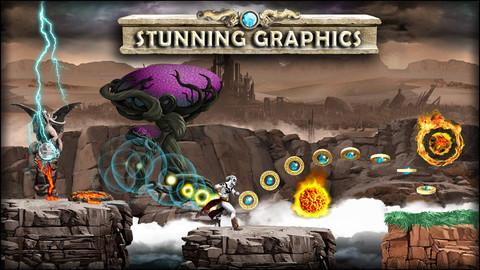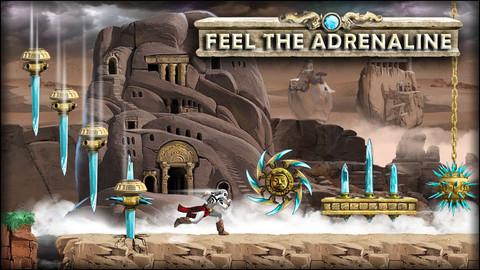- Wondering how to get Monopoly GO! free rolls? Well, you’ve come to the right place. In this guide, we provide you with a bunch of tips and tricks to get some free rolls for the hit new mobile game. We’ll …
The BEST Roblox Games of The Week – Games You Need To Play!
By Sho Roberts
Our feature shares our pick for the Best Roblox Games of the week! With our feature, we guarantee you'll find something new to play!Best Roblox Horror Games to Play Right Now – Updated Weekly
By Adele Wilson
Our Best Roblox Horror Games guide features the scariest and most creative experiences to play right now on the platform!Type Soul Clan Rarity Guide – All Legendary And Common Clans Listed!
By Nathan Ball
Wondering what your odds of rolling a particular Clan are? Wonder no more, with my handy Type Soul Clan Rarity guide.
Tribal Quest Review
Upon first glance, Tribal Quest may seem like an infinite runner starring a guy who looks a bit like Kratos from God of War and who sounds like John Goodman. That assumption is correct, though it tries to be much more. Tribal Quest is presented as a difficult game. A difficulty boost to the genre would be a great thing at times, but much of the game’s difficulty stems from its controls and not its design.

Tribal Quest is a good infinite runner that does nothing to stand out.
Upon first glance, Tribal Quest may seem like an infinite runner starring a guy who looks a bit like Kratos from God of War and who sounds like John Goodman. That assumption is correct, though it tries to be much more. Tribal Quest is presented as a difficult game. A difficulty boost to the genre would be a great thing at times, but much of the game’s difficulty stems from its controls and not its design.
Tribal Quest is a side-scrolling runner, similar to games like Jetpack Joyride. The player takes control of an unnamed character who’s given the ability to run, jump, double jump, and roll. Mastery of these controls is necessary for success. Learning the ins and outs of the jump mechanics is the most crucial part of the game. Similar to old-school platformers, the longer you hold the jump button, the higher the character jumps, up to its limit. There are many instances where maximum or minimum height is required. The controls aren’t perfect, but once players adapt, it’s easier to find success.
While running, there are numerous objects that appear: hazards, holes, gems, and totems. Hazards are easy enough to avoid in most cases. Some need to be jumped over, others rolled under, and sometimes both in quick succession. Players familiar with the genre won’t have any problem. Holes are the tougher issue. Because of Tribal Quest‘s attempted difficult level design, a lot of the gaps require a maximum jump or double-jump at the latest possible time. This won’t be a problem for players who know the genre, but can be frustrating for players who are new to infinite runners, especially in cases where double-jumping isn’t a safe bet.
Gems and totems work as the guides throughout the game. Gems are collectibles that usually dictate how the player should act in certain situations. By attempting to collect every gem, players will follow the path of least resistance and make the most progress. Totems act as a way to keep track of progress. Players will start passing by red totems, then later move onto green and other colors. When the totems change colors, the scenery shifts and the speed increases. The different scenes and speeds create the flavor and difficulty that Tribal Quest relies on, but a lack of precision in the controls and a slow starting pace result in a lot of runs never getting to that point. Fortunately, players can use (or purchase) gems to revive instantly, which is a nice way to continue a good run.
As far as gameplay is concerned, Tribal Quest doesn’t feel like anything special, but is a fundamentally solid game. A lot of the title’s uniqueness comes from its presentation. As the game progresses, the music and visuals become much more vivid, and they feel like a reward for players who manage to make it to that point. And although most of the presentation is great, the main character’s voice and reliance on uttering constant one-liners can quickly grow irksome, and a lot of players may opt to play with the sound off.
Tribal Quest‘s difficulty attempts to be the major selling point of the game. However, the game doesn’t feel significantly more difficult than any other infinite runner. Without that selling point, it’s hard to pinpoint anything that makes Tribal Quest stand out. The visuals are solid and the controls are decent (though they lack precision at times). The lack of features leaves a bit to be desired, however. There’s nothing bad about Tribal Quest, but it gets lost in a sea of similar and better endless runners.

The good

The bad
More articles...
Monopoly GO! Free Rolls – Links For Free Dice
By Glen Fox
Wondering how to get Monopoly GO! free rolls? Well, you’ve come to the right place. In this guide, we provide you with a bunch of tips and tricks to get some free rolls for the hit new mobile game. We’ll …The BEST Roblox Games of The Week – Games You Need To Play!
By Sho Roberts
Our feature shares our pick for the Best Roblox Games of the week! With our feature, we guarantee you'll find something new to play!Best Roblox Horror Games to Play Right Now – Updated Weekly
By Adele Wilson
Our Best Roblox Horror Games guide features the scariest and most creative experiences to play right now on the platform!Type Soul Clan Rarity Guide – All Legendary And Common Clans Listed!
By Nathan Ball
Wondering what your odds of rolling a particular Clan are? Wonder no more, with my handy Type Soul Clan Rarity guide.








 “
“